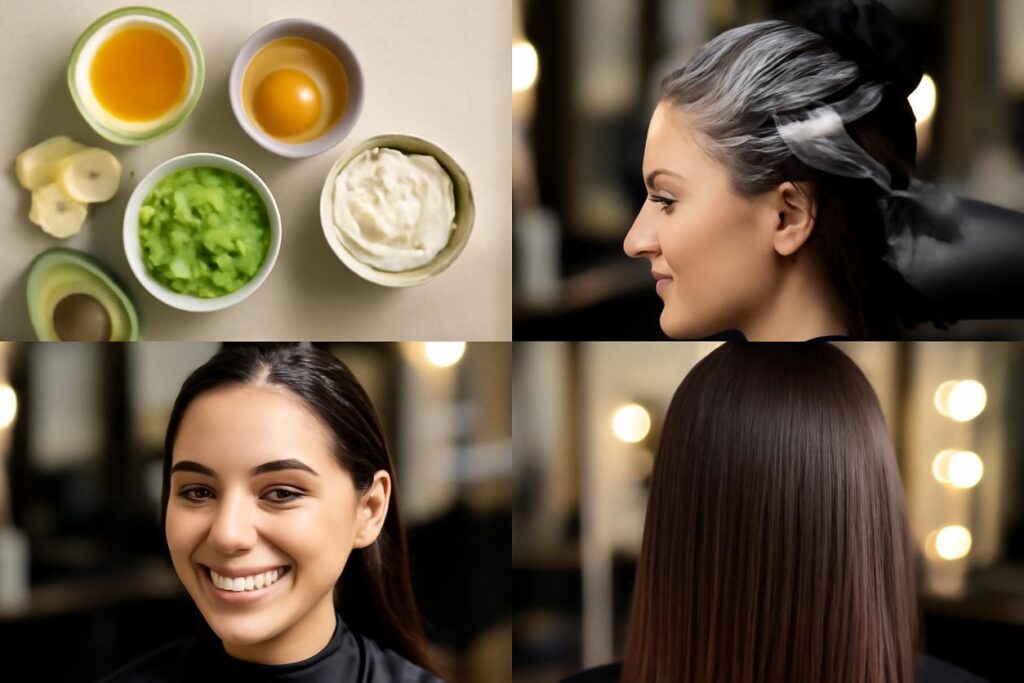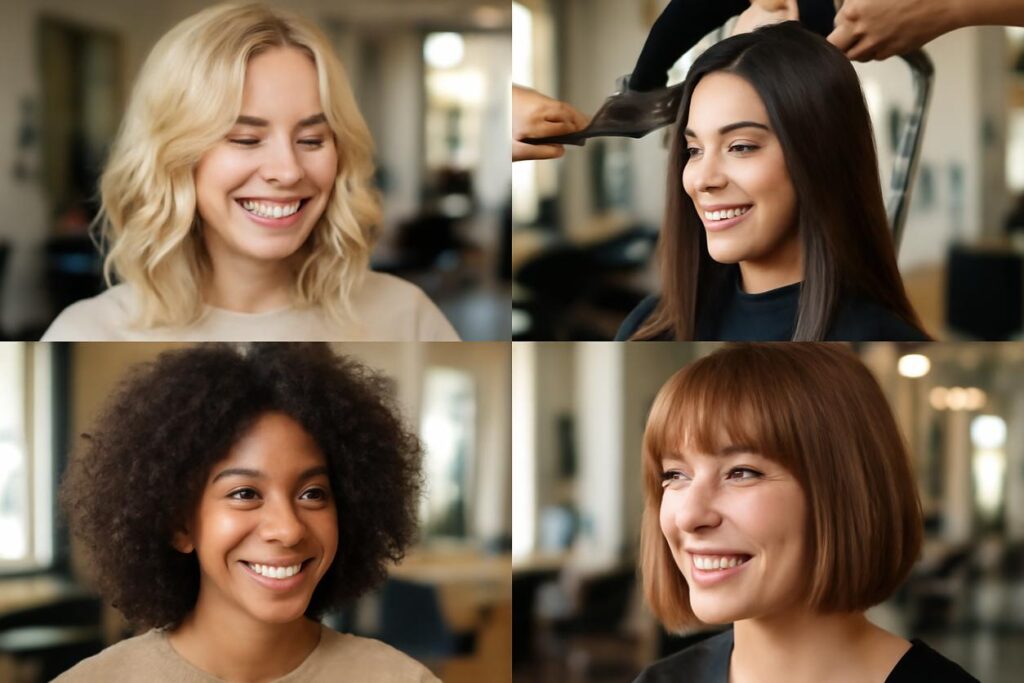Table of Contents
- Understanding curl structure and porosity
- Daily care: moisture, cleansing, and detangling
- Styling strategies for defined, frizz-free curls
- Overnight routines and protective methods
- Nutrition and habits that support curl health
- Simple DIY masks and ingredient safety
- Troubleshooting common curl concerns
- Quick daily routines by curl type
- Resources and next steps
Understanding curl structure and porosity
Welcome to your ultimate guide filled with practical curly hair tips to help you embrace and enhance your natural texture. Understanding your hair is the first step toward unlocking its full potential. Unlike straight hair, curly hair grows from an oval-shaped follicle, which is what creates its signature spirals and bends. This unique structure also means the hair’s protective outer layer, the cuticle, is naturally more raised, making it prone to dryness and frizz. This is why moisture is the foundation of any great curly hair routine.
How to determine your curl pattern
Identifying your curl pattern helps you find the right techniques and products. While most people have multiple patterns on their head, identifying the dominant one provides a great starting point. Hair types are generally categorized from Type 2 (wavy) to Type 4 (coily), with sub-classifications from A to C indicating the tightness of the pattern.
| Curl Type | Description |
|---|---|
| Type 2 (Wavy) | Ranges from loose S-shapes (2A) to more defined S-shapes (2B/2C). Prone to being weighed down. |
| Type 3 (Curly) | Features well-defined, springy curls, from loose loops (3A) to tight corkscrews (3B/3C). Can be prone to frizz. |
| Type 4 (Coily) | Characterized by tightly packed coils or zig-zag patterns, from dense S-shaped coils (4A) to Z-shaped patterns (4B/4C). Prone to major shrinkage and dryness. |
Knowing this helps you seek out curly hair tips tailored to your specific needs, whether it’s adding volume to waves or sealing moisture into coils.
Testing porosity and what it means for care
Porosity refers to your hair’s ability to absorb and retain moisture. It’s just as important as your curl pattern and is determined by the structure of your hair’s cuticle layer. You can test it easily:
- The Float Test: Place a clean, dry strand of hair in a glass of water. If it sinks quickly, you have high porosity. If it floats for a while before sinking, you have medium porosity. If it stays floating on top, you have low porosity.
What does this mean for your routine?
- Low Porosity: Cuticles are tightly packed. Hair resists moisture but holds it well once absorbed. Use lightweight products and occasional, gentle heat (like a steam cap) to help products penetrate.
- Medium Porosity: Cuticles are looser. Hair absorbs and retains moisture easily. This is often considered the easiest porosity level to manage.
- High Porosity: Cuticles are open or damaged. Hair absorbs moisture quickly but loses it just as fast. Focus on sealing in moisture with heavier creams, butters, and oils, and consider protein treatments to fill in gaps in the cuticle. For more on hair structure, you can explore a hair science resource.
Daily care: moisture, cleansing, and detangling
Consistent, gentle care is crucial for healthy curls. The goal is to cleanse without stripping natural oils, replenish moisture, and detangle without causing breakage. This section offers essential curly hair tips for your core routine.
Low frequency washes versus co-washing
Traditional shampoos containing sulfates can be harsh on curly hair, stripping the natural oils (sebum) that travel more slowly down the hair shaft. For 2025 and beyond, many are embracing gentler cleansing methods.
- Low-Frequency Washes: Instead of washing daily, try washing every 2-7 days with a sulfate-free shampoo (often called a “low-poo”). This helps maintain your scalp’s natural moisture balance.
- Co-washing: This involves washing your hair only with a cleansing conditioner. It’s an excellent option for very dry, coarse, or coily hair (Types 3C-4C) that needs maximum moisture. If you co-wash, it’s important to use a clarifying shampoo once a month to remove potential product buildup.
Gentle detangling methods
Never, ever dry-brush your curls! This is a fast track to frizz and breakage. The best time to detangle is when your hair is soaking wet and saturated with conditioner, which provides slip to help knots melt away.
- Start by using your fingers to gently separate large knots. This allows you to feel and work through tangles without tearing them.
- Follow up with a wide-tooth comb, starting from the ends and working your way up to the roots. This end-to-root method prevents you from pulling a small knot into a larger one at the bottom.
Styling strategies for defined, frizz-free curls
How you apply styling products is as important as the products themselves. The goal is to encourage your natural curl clumps to form while locking in moisture and minimizing frizz.
Product layering and application order
Applying products to wet hair is a non-negotiable tip for defined curls. Water helps distribute the product evenly and encourages curl clumping. A popular and effective method is the LOC or LCO method (Liquid, Oil, Cream or Liquid, Cream, Oil).
A simple layering routine for 2025 looks like this:
- Leave-in Conditioner (Liquid): Apply to soaking wet hair to provide a base layer of moisture.
- Curl Cream (Cream): Rake through a curl cream to enhance curl definition and provide soft hold.
- Gel or Mousse (Hold): Glaze a layer of gel or mousse over your curls using the “praying hands” method to lock in the style and protect against frizz. Then, gently scrunch toward the scalp to encourage curl formation.
Diffusing and air-drying techniques
Aggressive towel drying with a traditional terrycloth towel is a major cause of frizz. Instead, gently squeeze excess water out of your hair with a microfiber towel or an old cotton T-shirt.
- Air-Drying: The most gentle method. Simply let your hair dry naturally. To prevent gravity from pulling your curls down, you can use small clips at the roots to create lift and volume while it dries.
- Diffusing: A diffuser attachment on your blow dryer disperses airflow to dry curls gently, enhancing volume and definition. For best results, use low speed and low heat. Try “pixie diffusing,” where you place sections of your hair into the diffuser bowl and hold it against your scalp for a minute before moving to the next section.
Overnight routines and protective methods
How you sleep can make or break your curls. Protecting your hair at night preserves your style for day two (or three, or four!) and prevents tangles and frizz caused by friction against your pillowcase.
Nighttime spacing and the pineapple method
The “pineapple” is a go-to overnight style for many with curly hair. It involves gathering your hair into a very high, loose ponytail on top of your head, which protects your curls from being crushed while you sleep. Use a gentle tie like a scrunchie to avoid creating a dent.
For shorter hair or tighter coils, you can create several “mini-pineapples” in different sections of your head. The goal is simply to keep your curls contained and lifted off your neck and back.
Choosing silk and satin options for sleep
Cotton pillowcases absorb moisture from your hair and cause friction, leading to dryness, frizz, and breakage. Switching to a smoother surface is one of the easiest yet most effective curly hair tips.
- Satin or Silk Pillowcase: Your hair glides over the smooth surface, reducing friction and helping it retain moisture.
- Satin or Silk Bonnet/Scarf: This is another excellent option that fully encases your hair, providing maximum protection.
Nutrition and habits that support curl health
Healthy hair starts from within. A balanced diet and good habits provide the building blocks your body needs to grow strong, resilient hair. For professional advice, always consult a healthcare provider or a registered dietitian. You can find general nutrition guidance from trusted health sources.
Key nutrients and simple food suggestions
Focus on incorporating these key nutrients into your meals:
- Protein: Hair is primarily made of protein (keratin). Ensure you’re eating enough lean meat, fish, eggs, beans, and lentils.
- Iron: Iron deficiency can be linked to hair loss. Find it in red meat, spinach, and fortified cereals.
- Biotin: A B-vitamin crucial for hair health. Found in eggs, nuts, and whole grains.
- Omega-3 Fatty Acids: These healthy fats support a healthy scalp. Find them in oily fish like salmon, avocados, and flaxseeds.
- Zinc: Important for hair tissue growth and repair. Found in oysters, beef, and pumpkin seeds.
Simple DIY masks and ingredient safety
At-home treatments can be a great way to give your hair a boost, but always use fresh ingredients and perform a patch test on your skin before applying a new mixture to your hair and scalp. One of the best curly hair tips is to listen to your hair; it will tell you what it needs.
Recipes for moisture and protein balance
Your hair needs a balance of moisture and protein. Too much moisture can make it feel mushy, while too much protein can make it feel brittle.
- Simple Moisture Mask: For when your hair feels dry and straw-like. Mash half an avocado with one tablespoon of honey. Apply to clean, damp hair, leave on for 20-30 minutes, and rinse thoroughly.
- Simple Protein Mask: For when your hair feels limp and overly soft. Whisk one egg with two tablespoons of plain yogurt. Apply to hair, leave on for 15-20 minutes (do not let it fully harden), and rinse with cool water.
Troubleshooting common curl concerns
Even with a great routine, you might face challenges. Here’s how to tackle some common curly hair problems.
Managing breakage and split ends
Breakage and split ends are signs of damage. While you can’t repair a split end, you can prevent future ones.
- Get Regular Trims: Trimming your hair every 3-4 months removes split ends before they can travel up the hair shaft. Look for a stylist experienced in cutting curly hair, like those featured at salons like Rich Hair UK.
- Be Gentle: Avoid tight hairstyles that pull on your roots and minimize heat styling.
- Assess Your Routine: Breakage can be a sign of a moisture-protein imbalance. If your hair snaps easily, it may need more moisture. If it feels mushy, it may need protein.
Tackling uneven shrinkage and shaping
Shrinkage is the tendency for curly and coily hair to appear much shorter when dry than it is when wet. It’s a sign of healthy elasticity! However, uneven shrinkage can affect your overall shape.
- Targeted Stretching: For areas that shrink more, you can gently stretch the curls while they dry using techniques like banding or twisting.
- A Good Haircut: The right cut is fundamental. A stylist who specializes in curly hair can cut it in a way that works with your natural curl patterns and shrinkage to create a flattering shape.
Quick daily routines by curl type
Your daily “refresh” routine doesn’t have to be complicated. Here’s a quick-start guide based on curl type.
Short checklist for 2A to 4C curls
- Wavy (2A-2C): In the morning, lightly mist your hair with water. Scrunch in a small amount of lightweight mousse or spray gel to reactivate waves without weighing them down.
- Curly (3A-3C): Use a spray bottle with water and a little bit of leave-in conditioner to rehydrate curls. Target frizzy or undefined sections, smooth them with your fingers (finger coiling), and scrunch.
- Coily (4A-4C): Coils need daily moisture. Lightly spritz with water or a refreshing spray, then apply a small amount of cream or oil to your ends to seal it in and revive shine.
Resources and next steps
Embracing your natural curls is a journey, not a destination. Be patient, experiment, and have fun with it! The most important of all curly hair tips is to learn what your unique hair loves and build a routine that celebrates it.
Continue learning from reliable sources, connect with the curly community, and don’t be afraid to try new techniques. Your best hair days are ahead of you.






